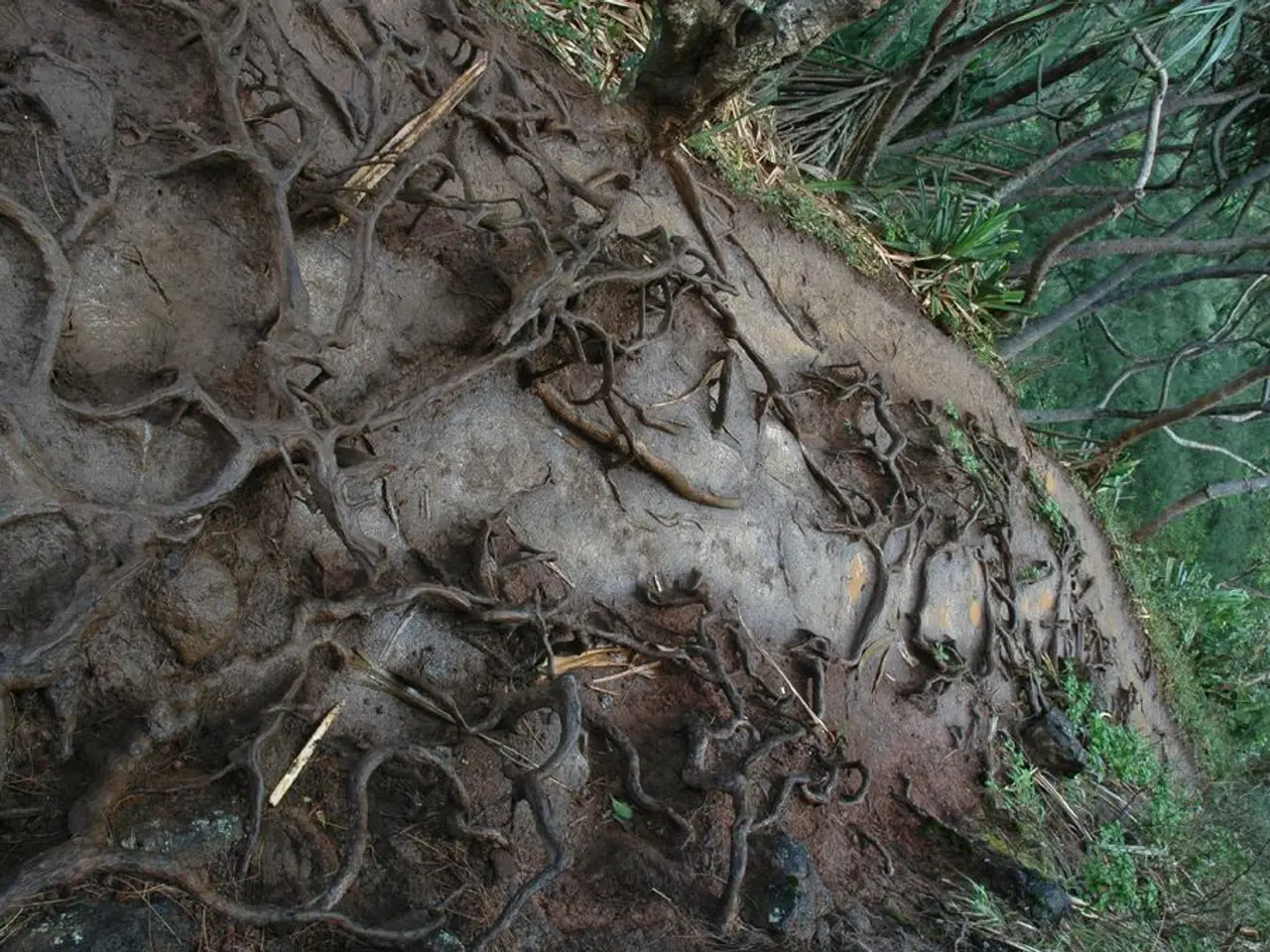Soil Enrichment Through Natural Decay: The Plant Breakdown Process
In the quest for sustainable gardening, a new crop of heroes is emerging – clay-busting plants. These plants, such as artichoke, daikon radish, cowpea, mustard, annual sunflower, and others, boast strong, vigorous root systems that can drill through and break up compacted hardpan clay, transforming it into fertile soil.
When these plants die, their roots continue their work, helping to break down rocks into smaller pieces, forming soil. This process is aided by fungi, detritivores, and microscopic bacteria, which play a vital role in decomposing plant material and forming healthy soil.
Fungi and bacteria are primary decomposers that secrete enzymes to break down complex organic molecules in dead plant matter into simpler compounds. Detritivores, like earthworms, physically fragment dead plant material into smaller particles during fragmentation, increasing the surface area accessible to microbes for decomposition. Together, these organisms contribute to humification, the transformation of partially decomposed organic matter into humus, a stable dark organic substance in the soil.
Humus improves soil structure, moisture retention, nutrient storage, and supports soil biodiversity. The overall decomposition process involves multiple stages – fragmentation by detritivores, enzymatic degradation by fungi and bacteria, leaching of soluble substances, humification, and mineralization where nutrients are released back into the soil to be reused by plants.
This biological activity is crucial for nutrient cycling, maintaining soil fertility, and building the organic component of soil, thereby contributing to soil formation and ecosystem health.
Clay-busting plants can be used as cover crops in vegetable beds or interplanted with other crops. Aerating the soil by injecting air pockets can be done using tools such as a broadfork or a digging fork. Contouring the land by creating alternating high peaks and low valleys in the garden terrain can help to slow down and manage water.
Moreover, adding soil amendments, such as compost, green manure, leaf mould, livestock manures, and worm castings, can help to improve the structure of clay soil. The breakdown of plants is essential to nature's capacity for regeneration.
In essence, by harnessing the power of clay-busting plants, fungi, detritivores, and microscopic bacteria, we can regenerate our soil, creating a healthier, more sustainable environment for plant life and soil ecosystems.
- Environmental science shows that, by promoting the growth of clay-busting plants and supporting the activity of fungi, detritivores, and bacteria, we can improve the decomposition process in our home and garden, leading to a more sustainable lifestyle.
- As these plants decompose, they enrich the soil with humus, a dark organic substance that improves soil structure, moisture retention, nutrient storage, and supports soil biodiversity, thereby contributing to a healthier home and garden ecosystem.







